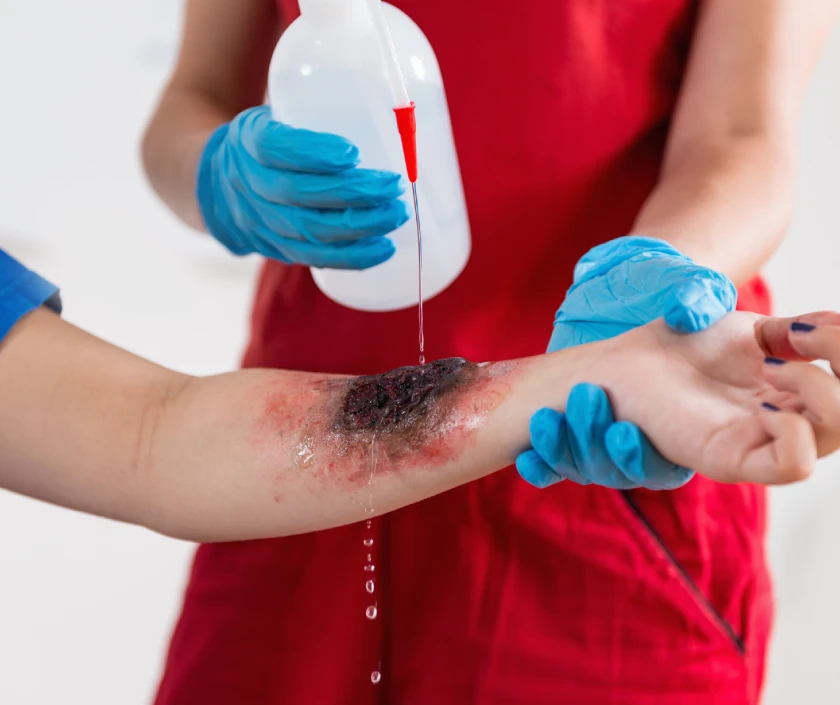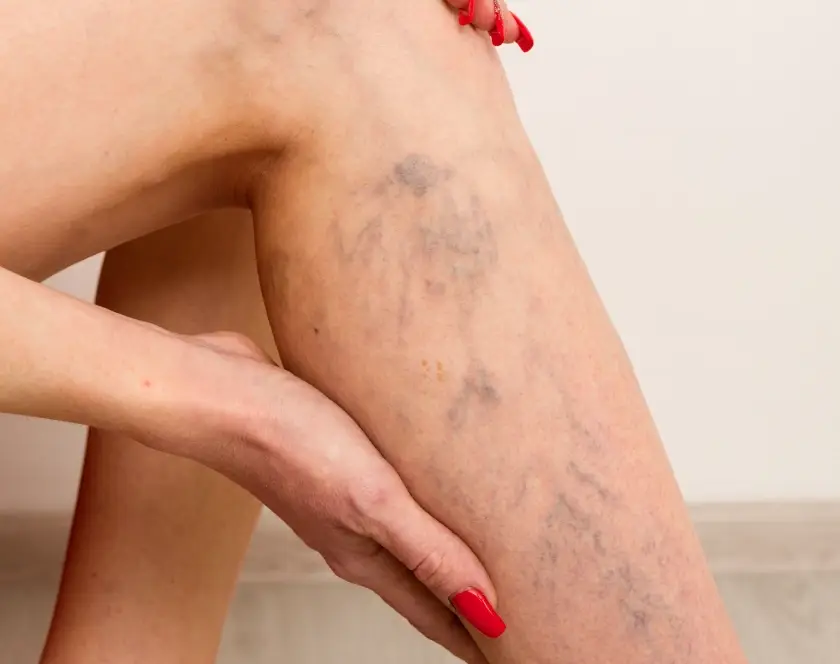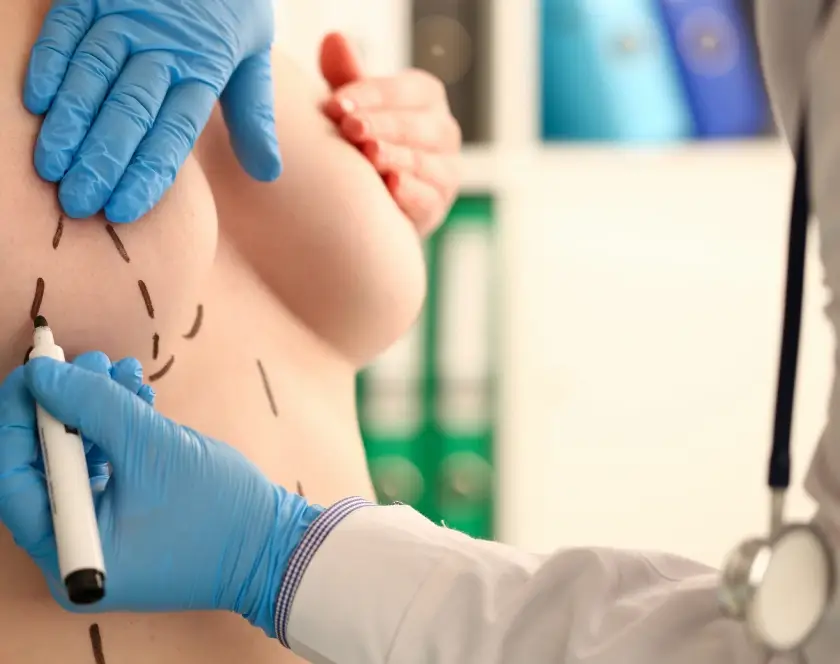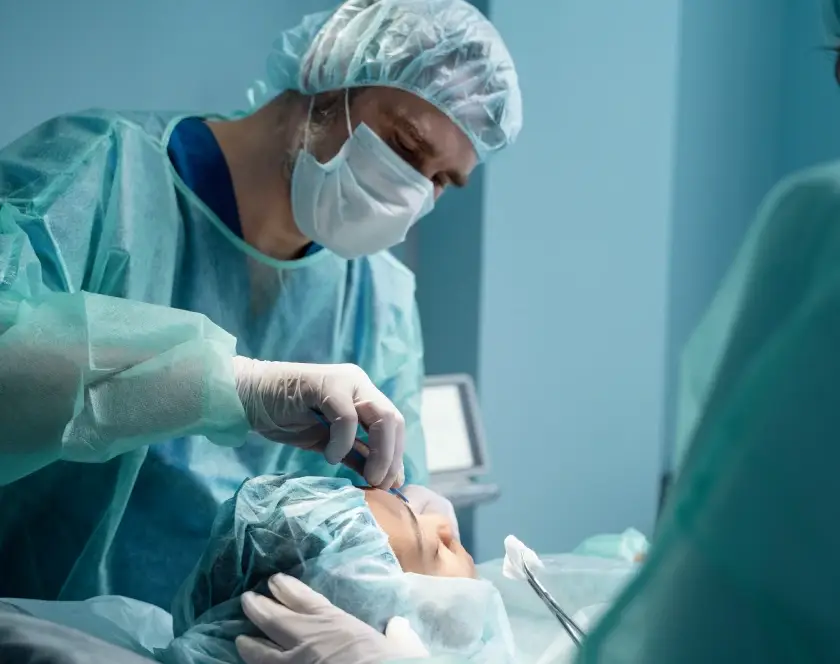What Are Burns?
Burns are injuries to the skin or deeper tissues caused by heat, chemicals, electricity, friction, or radiation.
Depending on the depth and severity, burns are classified into:
- 1st Degree Burns: Affect only the outer layer (epidermis); typically red and painful
- 2nd Degree Burns: Involve the dermis layer; cause blisters, swelling, and severe pain
- 3rd Degree Burns: Extend through all skin layers and sometimes tissues; may appear white, charred, or leathery with reduced pain due to nerve damage
At Elegance Clinic, we offer both acute burn care and reconstructive surgery to help patients regain function, appearance, and confidence.
When is Burn Treatment Needed?
Seek medical help if you experience:
- Severe or widespread burns
- Burns to the face, hands, feet, genitals, or major joints
- Burns showing signs of infection (pus, odour, fever)
- Nonhealing wounds or contractures after healing
- Scars or deformities due to prior burns
- Hyperpigmentation or post-burn vitiligo
Post-laser burn treatment requirements
Types of Burns and Conditions Treated:
Acute Burns
- Thermal Burns:
- Flame burns
- Scald burns (hot liquid/steam)
- Contact burns (hot objects)
- Chemical burns: From acids, alkalis or solvents
- Electrical burns: Often deeper and more severe internally
Post-Burn Sequelae (Burns)
We specialise in managing the complications that arise after burns heal, such as:
- Hypertrophic scars
- Keloids
- Nonhealing wounds
- Contractures of the:
- Hand, fingers
- Axilla (underarm)
- Elbow, knee
- Neck, lip, and mouth
Secondary Deformity Corrections
- Ectropion of eyelids
- Ear deformity due to burns
- Port-burn alopecia (hair loss due to scalp burn)
- Pigmentation issues – hyperpigmentation or post-burn vitiligo
Pre-Treatment Protocol
Your consultation at Elegance Clinic includes:
- Thorough wound and scar assessment
- Burn history and prior treatment review
- Grading of burn depth and complications
- Photography and documentation of deformities
- Customised treatment plan, medical, surgical, or both
- Pre-surgical health screening, if reconstruction is needed
Treatment Process: How We Treat Burns
Depending on severity and stage, our burn treatment involves:
For Acute Burns:
- 1st Degree Burn Treatment:
- Topical cooling, 1st degree burn home treatment
- Moisturising, pain relief, and sun protection
- 2nd Degree Burn Treatment: (second degree burn treatment)
- Wound cleaning and burn wound dressing
- Antibiotic creams, sterile bandaging
- Fluid management, nutritional support
- 3rd Degree Burn Treatment:
- Surgical debridement of dead tissue
- Skin grafting or flap surgery
- Long-term wound care and infection control
For Post-Burn Complications:
- Scar revision surgery
- Contracture release with skin graft or flap
- Laser resurfacing for pigmentation
- Post laser burn treatment options for aesthetic repair
- Hair transplant or scalp reconstruction in burn alopecia
- Functional and aesthetic restoration for face, hands, neck, and joints
Duration of Treatment
- Initial acute care: May require daily dressings for 1-3 weeks
- Surgical reconstruction: Typically 1-2 hours per procedure
- Healing time for grafts/flaps: 2-4 weeks, depending on the area
- Scar treatments/laser sessions: May need multiple sittings over months
Clinical Considerations: Risks and Benefits
- Risks (carefully managed):
- Infection
- Graft failure
- Scar thickening
- Delayed healing in diabetic or vascular patients
- Expected Benefits:
- Pain reduction and functional recovery
- Improved appearance and confidence
- Restoration of normal movement in joints
- Psychological relief from visible scarring
Aftercare Instructions
- Keep the dressing clean and dry
- Avoid sun exposure on healing wounds
- Apply prescribed ointments regularly
- Wear compression garments if advised
- Follow up regularly for wound monitoring
- Physiotherapy may be recommended for movement recovery
- Emotional support or counselling if needed
Recovery Timeline
- Minor burns: Heal within 7-14 days
- Moderate-to-severe burns: 3-6 weeks or longer
- Surgical recovery: Varies from 2 weeks to several months, depending on complexity
- Scar remodelling: Can take 6-12 months with treatment
When to Consult a Burn Doctor?
Immediately contact a burn doctor or visit Elegance Clinic if you:
- Have burns deeper than superficial redness
- Notice oozing, foul smell, or increased pain
- See restricted movement due to scarring
- Need cosmetic or functional correction of a burn-related deformity
- Experience post-laser burn symptoms like redness, blistering or scarring
- Immediately contact a burn doctor or visit Elegance Clinic if you:
- Seek the best treatment for burn scars or skin grafting
Hear from our patients
EXCELLENTTrustindex verifies that the original source of the review is Google. Dr.shah is very kind and understanding... during my surgery of xentholesma..sir didn't late me feel nervous at all..he kept talking to me..he kept singing classic old hindi songs while performing surgery..I was like "ye to apne type ka banda hai"..I didn't even realise when my surgery got over. mr. Bhargav in staff and other team members were very kind an supportive.. I just have one minor complaint..simple panipuri wala or vegetable person in surat is always ready to receive online,UPI ,QR payment..but,pharmacist over their always be like "mera to cash payment hoga". Rest all is good.. people over there are very sincere at their work. I would definitely suggest to visit elegance clinic for getting your xentholesma cured.treatment charges are also affordable.Posted onTrustindex verifies that the original source of the review is Google. I am fully satisfied my hydrafacial treatmentPosted onTrustindex verifies that the original source of the review is Google. The experience was too good staff was really humble and the results were actually good!Posted onTrustindex verifies that the original source of the review is Google. I got hair transplant which is very painful but Got it done on ELEGANCE so it was very normal and which was bery helpful for me Special thanks to staff.Posted onTrustindex verifies that the original source of the review is Google. I had PRP and laser treatments at Elegance clinic for my skin and hair, and the experience has been truly excellent. Dr. Krina handled my skin treatment with great care and attention — I noticed a visible improvement in my skin texture and glow. For my hair, Dr. Bhargav and Dr. Ashutosh guided me through the PRP sessions with patience and professionalism, ensuring I was comfortable and well-informed throughout. The entire staff is polite, supportive, and the clinic maintains high standards of hygiene and advanced equipment. Overall, I’m very satisfied with the results and would highly recommend this hospital to anyone looking for genuine care and effective treatmPosted onTrustindex verifies that the original source of the review is Google. Dr Asutosh sir is very excellent Tammy tack sargary..Posted onTrustindex verifies that the original source of the review is Google. A good doctor clinic review often highlights a clinic's positive aspects, such as a doctor's expertise, a friendly and competent staff, convenient hours, and a clean, comfortable environment.Posted onTrustindex verifies that the original source of the review is Google. After suffering a serious burn injury due to a machine accident, I was fortunate to be treated by Dr. Ashutosh Shah at Elegance Clinic. His skill and calm approach gave me confidence from the first consultation. The surgery was done with great care, and the recovery support was outstanding. The clinic is clean and peaceful, and the staff treats you like family. Forever thankful for their help during a very tough timePosted onTrustindex verifies that the original source of the review is Google. One of the best doctors as well as staff in the town, just loved the process post surgery, follow up calls is non negotiable for them. Dr ashutosh shah and dr chetan were incredible. Best service provided by the elegance clinic!Posted onTrustindex verifies that the original source of the review is Google. "We had a wonderful experience at Elegance Clinic for my wife's HIFU treatment. The staff was friendly and supportive, and the clinic environment was very professional. Dr. Ashutosh Shah took the time to explain the procedure and what to expect. The final result is excellent—my wife's skin looks much firmer and rejuvenated. She is very happy, which makes me happy! A truly world-class clinic for aesthetic procedures
Contact Us
Ready to discuss? Fill out our contact form for a confidential consultation.
FAQ
What is the best way to treat a burn?
For minor burns, use cool water and apply soothing creams. For deeper burns, consult a burn specialist for professional burn wound care and treatment.
What is the best pain relief for burns?
Over-the-counter painkillers like paracetamol or ibuprofen help. In severe cases, prescription medication may be needed.
Which ointment is best for burns?
Silver sulfadiazine or antibiotic creams are commonly prescribed. Avoid using toothpaste or raw remedies.
What is the first aid for burns?
Cool the burn with running water for 10–15 minutes, cover with a clean cloth, and seek medical help for anything beyond mild redness.







